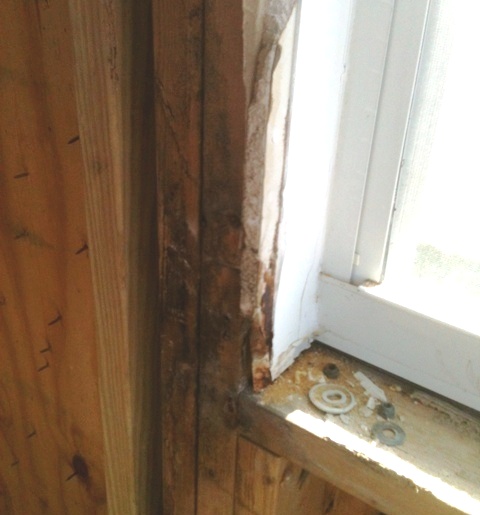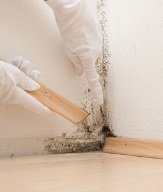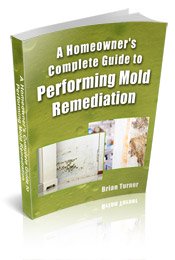Find a Mold Specialist Now
Click or Call, Toll-Free 24/7
Proper Mold Remediation Protocol
There is a specific mold remediation protocol that needs to be followed when you are removing mold, and failing to follow the outlined steps could result in mold cross contamination and future mold problems. Some people don’t realize how important the removal protocol is, and they attempt to clean up mold in the wrong way. This do-it-yourself attitude, without proper knowledge and tools, may result in harm to yourself and your family because of the increased mold exposure.
It is possible to clean up the mold on your own, but even if you are planning to take care of the project by yourself you will still want to consult with a mold specialist in order to be sure that you are not making the problem worse. Finding a mold specialist in your area is well worth the time and money, because you will be assured that the problem is cleaned up correctly and that your family is protected.
Removing Mold the Right Way
Don’t start the process without following these mold remediation protocol steps:
- Always consult with a mold specialist; they will have the equipment that is needed to test the area for mold spores. Also, they will advise you on the best way to clean up your home and what needs to be done to avoid future mold problems.
- Seal off the area to prevent cross contamination. Don’t make the mistake of removing mold without protecting the rest of your house. Using plastic sheets and duct tape to seal off the room will prevent the mold spores from moving into other rooms.
- Use protective clothing. When you begin the cleanup process, the mold spores will become airborne and they can cause additional health problems if you breathe them. Additionally, you need to avoid direct contact with your skin. Always wear eye goggles, a respirator mask, rubber gloves, coveralls, and a hat. Be careful about this equipment cross contaminating other areas of the home, you will want to take everything off before moving about the rest of the house.
- Mold testing is an essential part of the mold remediation protocol, especially after the cleanup process is complete. Most professionals suggest that you have your home tested before beginning the cleanup process, and then at the end in order to be sure that everything has been cleaned effectively. Mold spores are microscopic, and the mold testing will be able to identify if there are spores in the air.
- Don’t use bleach, removing mold with bleach won’t completely kill all of the spores. In fact, bleach can be deceptive because it will take away the color of the mold, which makes you think that the mold is gone. Instead of bleach, use a high quality biocide which will effectively kill all of the mold spores. Sometimes, it is necessary to use the biocide several times, and you will need to consult with a mold specialist to determine how many times the area should be sanitized.
- Use a negative air machine, which will manage the pressure in the room and keep the air flowing inward. This will prevent cross contamination to other areas of the home. Also, a negative air machine will help to filter mold spores out of the air. Just be sure that the machine has HEPA filters.
- When you are done be sure to HEPA vacuum the entire area to remove any additional mold spores.
If you are following the mold remediation protocol by yourself, don’t skip any of the steps because it may result in a partial cleanup job. We recommend that you have a professional work on removing mold for you, or at least consult with a professional who can guide you through the cleanup steps.
The photo below shows mold that was found in a wall from a leak in the window. The sheetrock and insulation were moldy as well and had to be replaced.
Benefits of Scheduling a Free Consultation with a Mold Removal Specialist
- A professional can make sure you’ve located all the mold in your home (mold often grows in places where it’s not easily seen, like in attics, crawl spaces, and heating ducts).
- A professional will know the best techniques for removing mold in a variety of settings.
- A professional will have all the necessary equipment to do the job correctly and safely.
- A professional can advise you about the necessary safety precautions and the most effective products to use even if you opt to do the actual work yourself.
Since a consultation with a professional is free, you have nothing to lose and a lot to gain. To find a professional offering free consultations in your area, just follow the link.
Return From Mold Remediation Protocol To Our Home Mold Remediation Page
Black Mold Health Symptoms Home Page







